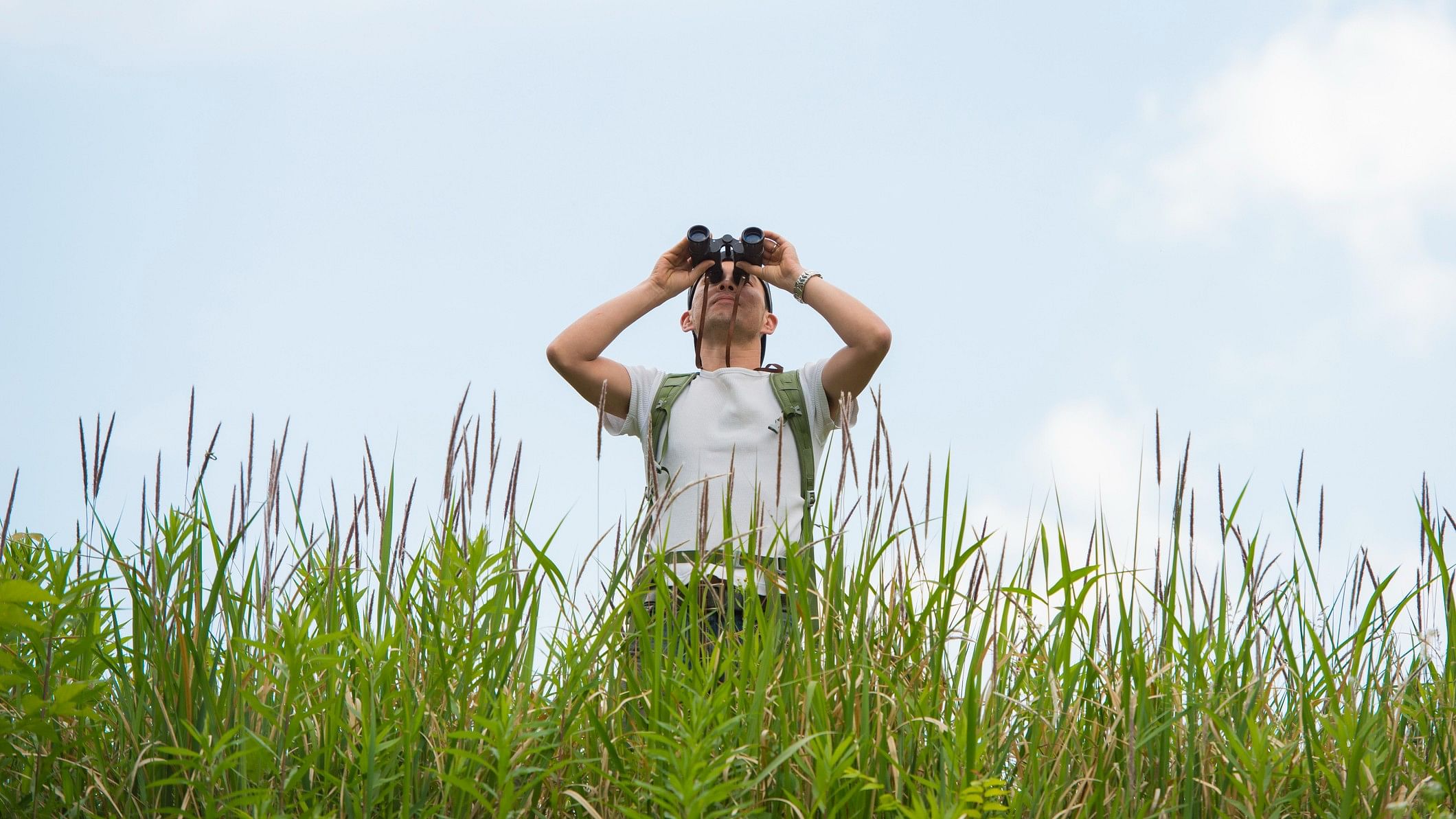
Representative image indicating birdwatching.
Credit: iStock Photo
Human relationships with birds have metamorphosed with time. From seeing them as a source of food, gathering their feathers, eggs and skin and hunting them for sport, we have come a long way in appreciating birds for what they are: intriguing life forms that aesthetically please our eyes and make sounds that are music to our ears. Our fascination has morphed into a hobby called birdwatching or birding, a term coined in the early 1900s by British ornithologist Edmund Selous.
When birding began at the turn of the 20th century, a birder’s toolkit typically included a pair of binoculars, a handbook on birds, and a notepad to sketch and jot down what they saw. Birders exchanged notes and painstakingly curated their observations to help understand birds and their numbers in an area. Soon, cameras replaced sketchbooks in the field, and audio recorders enriched observations.
In the last few years, mobile internet and smartphones have made birding amateur-friendly and immensely contributed to understanding birds through citizen science. Apps like Cornell Lab of Ornithology’s Merlin can use photos and bird calls to identify birds in real time. eBird and iNaturalist can keep track of birds observed.
Enter artificial intelligence
So far, smartphone-based birding apps have collected billions of observations from users worldwide, generating a treasure trove of data to be used by data-crunching, pattern-recognising and self-learning algorithms (collectively referred to as artificial intelligence or AI). Computer programs combine such large datasets, recognise specific patterns and features in the data, and then use them to identify previously unseen data.
In 2021, Cornell Lab of Ornithology released BirdNET, an AI-based research platform that can recognize more than 3,000 common bird species worldwide. Even newbie bird enthusiasts with no birding knowledge can record a bird call on their phones, and the app will identify the species by the sound. Haikubox, an AI-based smart device that continuously monitors and identifies backyard birds based on their calls, uses BirdNET to educate its users about birds that visit their homes while contributing data to bird behaviour and climate change studies.
AI-based tools are also helping track bird migration, which has so far relied on weather radars. While these can tell the direction of migration and the birds’ speed and density in the sky, they don’t know the species of the birds. Here’s where BirdVox—an AI-based platform that automatically detects and classifies birds flying freely in the sky—comes in.
A boon for bird science
While tools are cool on smartphones, what do they mean for science? “All of this has certainly helped ornithology,” says ecologist V V Robin from the Indian Institute of Science Education and Research (IISER) Tirupati, who studies bird bioacoustics. “It helps us scale up our sampling area and sample for longer [time].”
Robin cites the example of a recent project involving listening to the call of Jerdons Courser, a nocturnal endemic bird from Southern India that remained unseen for over a decade. The researchers set up recorders to listen to the bird every minute through the night for six months—a fete AI could perfectly do—and saved big on time. “We can now spend time away from the hard labour of detecting species to answer more thoughtful questions on species’ ecology,” he says.
Anand Krishnan, who studies acoustic signals and birds at the Jawaharlal Centre for Advanced Scientific Research (JNCASR), Bengaluru, is quite excited about using AI in his field. “Although I think there’s a long way to go before AI and machine learning (ML) become more widespread in bioacoustics, they are of quite some use when studying simpler, more repetitive sounds,” he says, citing an example of how they can help distinguish specific sounds from a cacophony.
Scientists also tap into AI and acoustics to decipher what birds talk about. For example, the Earth Species Project uses AI to build models that analyse animal vocalisations, including the brilliant New Caledonian Crow, a native of the Pacific Islands, which uses tools. “As all species need to communicate with each other, our ability to tap into their mode of communication makes it easier for us to understand their behaviour,” says Robin.
Possibilities plenty, but concerns remain
AI promises to bring new possibilities to the world of birding and ornithology as it does for most fields today. But Krishnan has a word of caution on the reliability and accuracy of this technology. “Automation both speeds things up and helps certain analyses, but I doubt we’ll ever be at a point where everything happens at the click of a button with no human endeavour,” he says. “I probably wouldn’t trust an algorithm like that in any case.”
Since most of these apps and algorithms are developed by researchers in North America and Europe, they don’t always work well in tropical countries like India, which has an entirely different set of bird species. There’s a need to expand the current datasets with more observations from other parts of the world or develop apps and tools suited to local needs. Many projects are now aiming to achieve these.
Nevertheless, Robin is upbeat about tapping AI to make sense of bird sounds and understand more about their behaviour in a world that’s getting louder by the day. “I think bioacoustics is perfectly suited for Indian conditions,” he says. “It is new, and for a society that looks to technology to solve our problems, this is a perfect fix, especially since we have a whole generation of coders!”